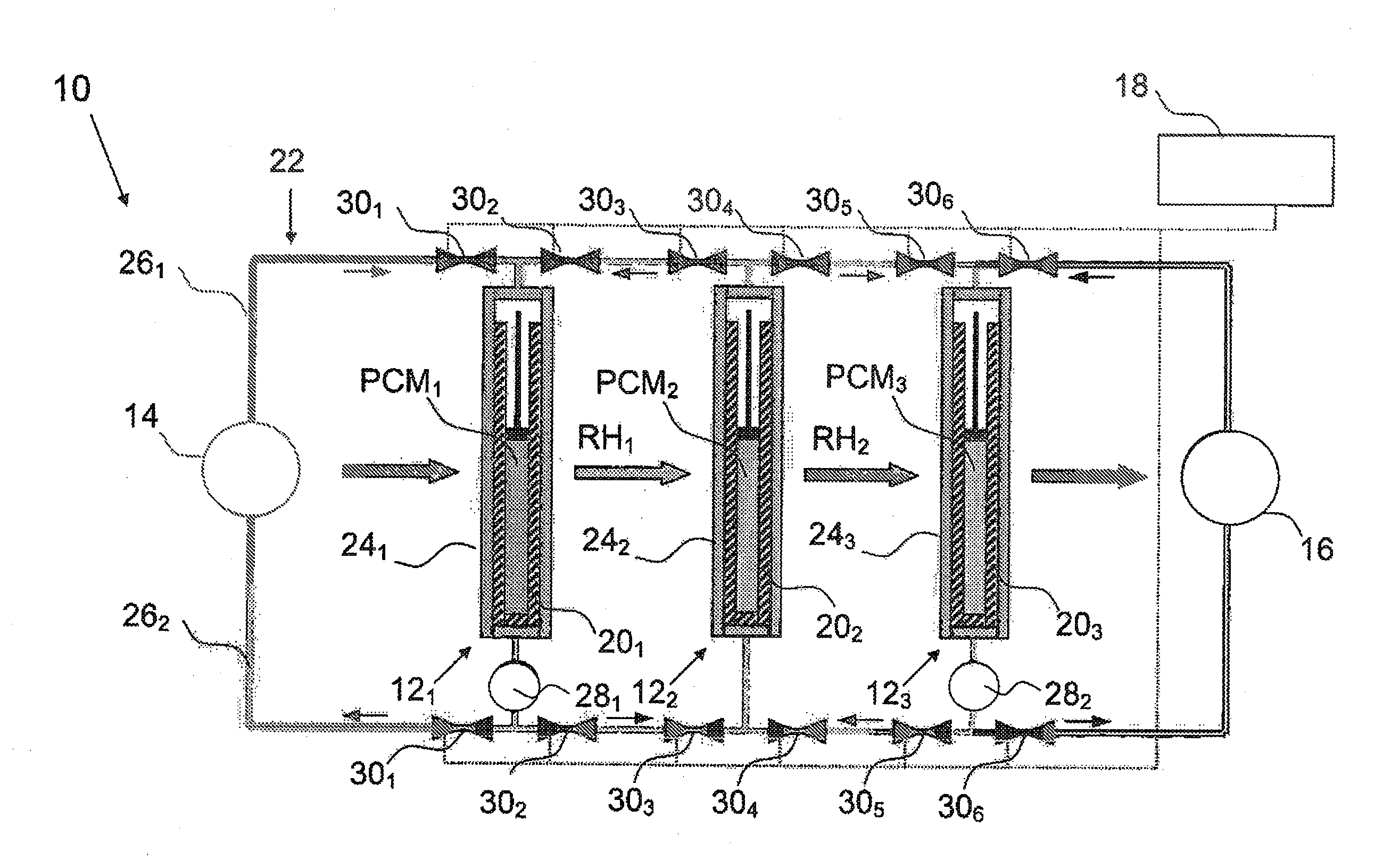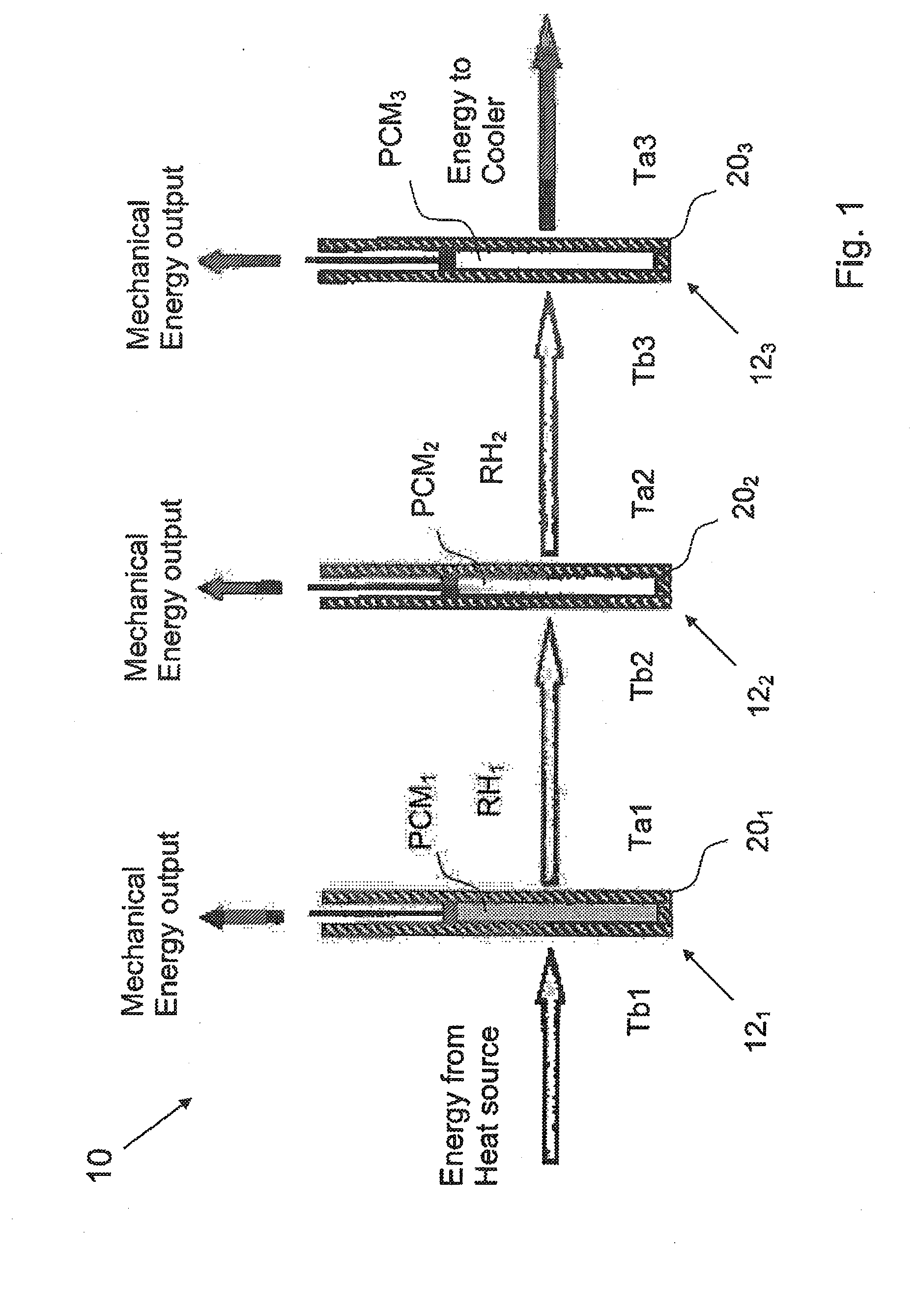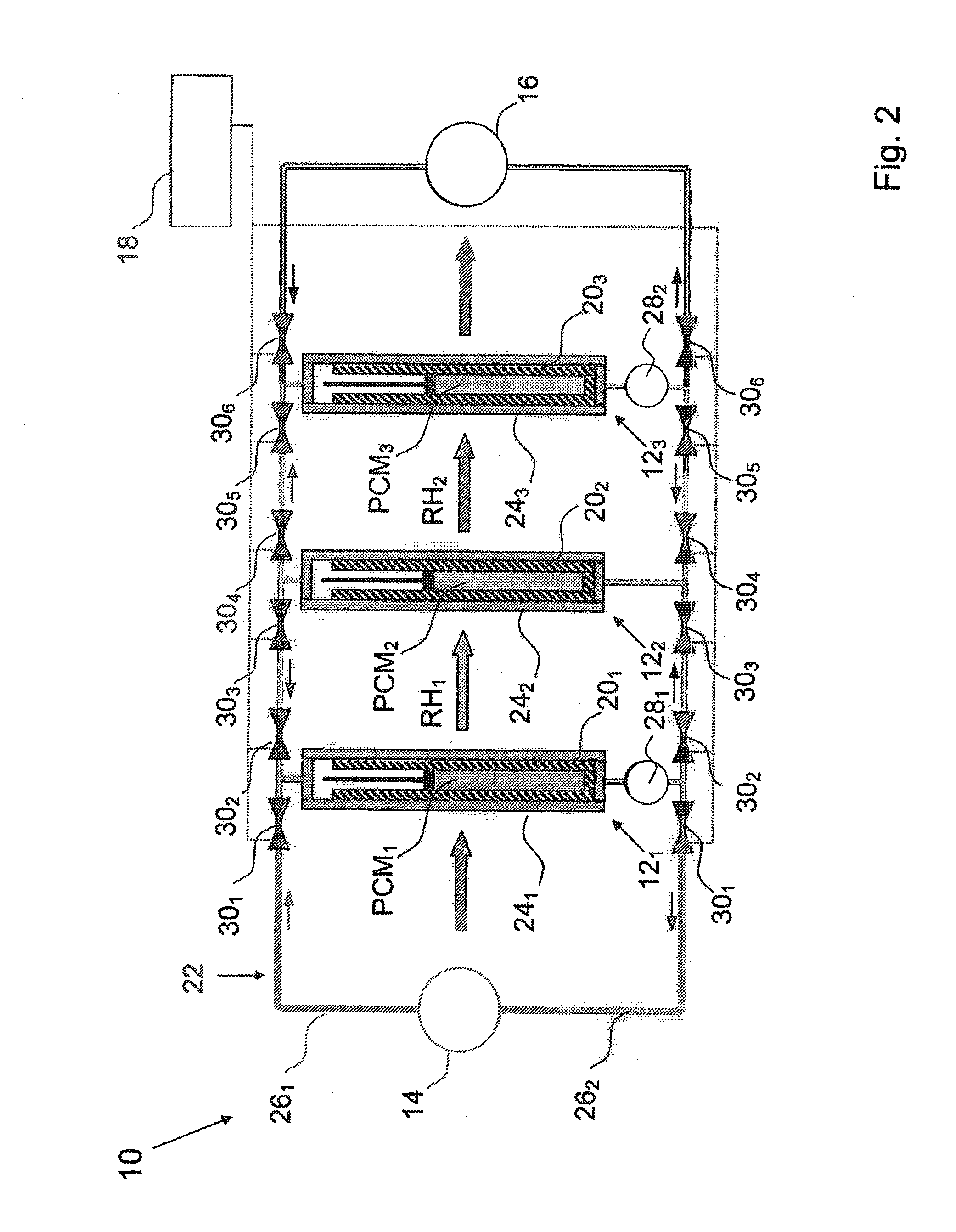System and method for regenerating heat energy
a heat energy and energy system technology, applied in the field of energy systems, can solve the problems of insufficient efficiency of the energy system, and achieve the effect of enhancing method efficiency
- Summary
- Abstract
- Description
- Claims
- Application Information
AI Technical Summary
Benefits of technology
Problems solved by technology
Method used
Image
Examples
first embodiment
[0045]In FIG. 1 there is disclosed a schematic diagram of an energy system 10 according to the present invention. The energy system 10 is operable to regenerate heat energy. In FIG. 1, the energy system 10 comprises three energy cells 121-123, which are connected in a sequence. Each energy cell 121;122;123 comprises a chamber means 201;202;203, which in turn comprises a phase change material PCM1;PCM2;PCM3.
[0046]Each phase change material PCM1;PCM2;PCM3 has an average phase change temperature PCMT1;PCMT2;PCMT3, wherein PCMT1>PCMT2>PCMT3. The average phase change temperature of the first phase change material PCM1 is defined as PCMT1=(Ta1+Tb1) / 2, wherein the phase change occurs between the two temperatures Ta1 and Tb1. The same applies for the other energy cells 122 and 123 with the corresponding phase change materials PCM2 and PCM3. Each energy cell 121;122;123 either produces mechanical energy, schematically disclosed in FIG. 1 with vertical arrows, and rest heat energy RH1;RH2;RH3...
second embodiment
[0055]In FIG. 3 there is disclosed a schematic diagram of an energy system 10 according to the present invention. In this embodiment there are two groups of energy cells, a first group with four energy cells 121, and a second group with four energy cells 122. In this embodiment, there are two pump means 281 and 282, and four valve means 301, 302.
third embodiment
[0056]In FIG. 4 there is disclosed a schematic diagram of an energy system 10 according to the present invention. In this embodiment there are three groups of energy cells, a first group with four energy cells 121, a second group with four energy cells 122, and a third group with four energy cells 123. In this embodiment, there are two pump means 281 and 282, and six valve means 301-303.
PUM
 Login to View More
Login to View More Abstract
Description
Claims
Application Information
 Login to View More
Login to View More - R&D
- Intellectual Property
- Life Sciences
- Materials
- Tech Scout
- Unparalleled Data Quality
- Higher Quality Content
- 60% Fewer Hallucinations
Browse by: Latest US Patents, China's latest patents, Technical Efficacy Thesaurus, Application Domain, Technology Topic, Popular Technical Reports.
© 2025 PatSnap. All rights reserved.Legal|Privacy policy|Modern Slavery Act Transparency Statement|Sitemap|About US| Contact US: help@patsnap.com



